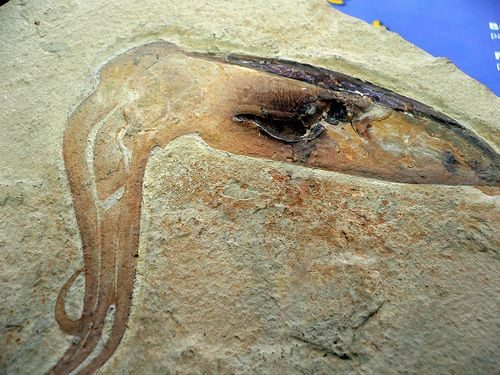For Halloween, I was going to find a scary picture of a cephalopod skeleton, but gosh, squid tend not to have them, and they just rot down into gooey slime that doesn’t look very spooky. So you’ll just have to settle for Trachytheuthis libaotica, a 100 million year old fossil squid.



Pratchett-approved spelling.
Wow! That’s amazing! A true beauty.
And here I only have boring old belemnites in my collection.
Well, I’m impressed (and so was the squid!)
What’s this? What’s this?
A fossil of a squid!
What’s this?
Beneath the ground was hid!
Wait, so gooey slime isn’t spooky?
What a beauty.
the pop across ads on this website is the reason I install adblockers :)
What distinguishes it as a squid in particular rather than another cephalopod group?
It seems to be still waiting for the right moment to empty its ink sac.
Fantastic fossil with soft tissue preservation. In answer to Callinectes question; There are only three groups of cephalopods. Squid (ten arms) Octopus (self-explanatory) and Nautiloids, with their ancestral external chambered shell. (argonauts are especially interesting) Many squid species have an internal bony structure called a gladius or cuttlebone. It is frequently the only part that fossilizes. Octopus lack any internal bones, though their beak is chitinous.